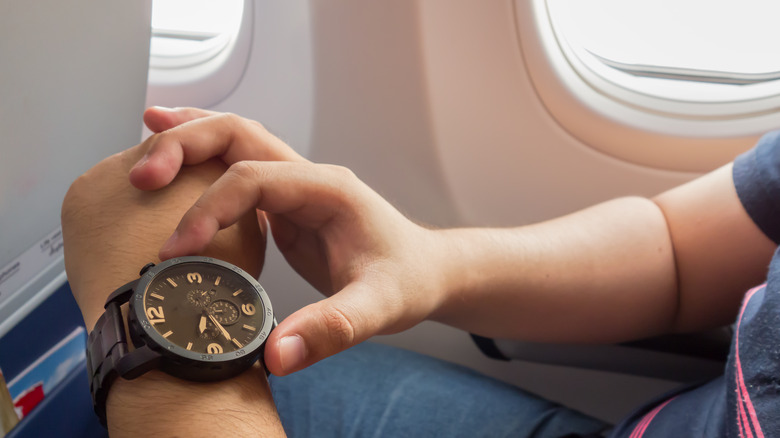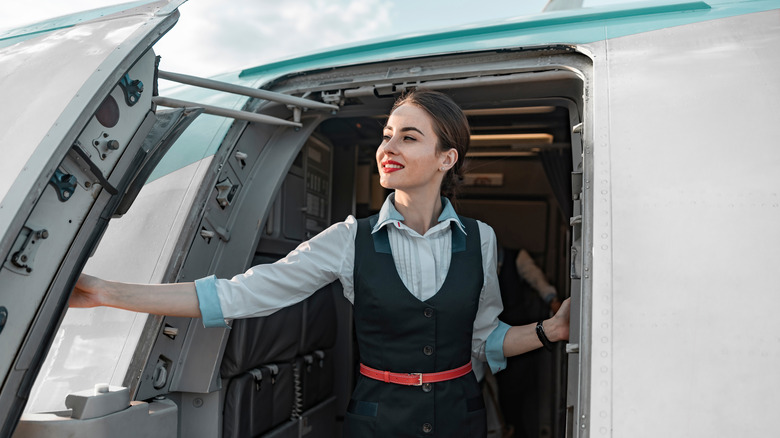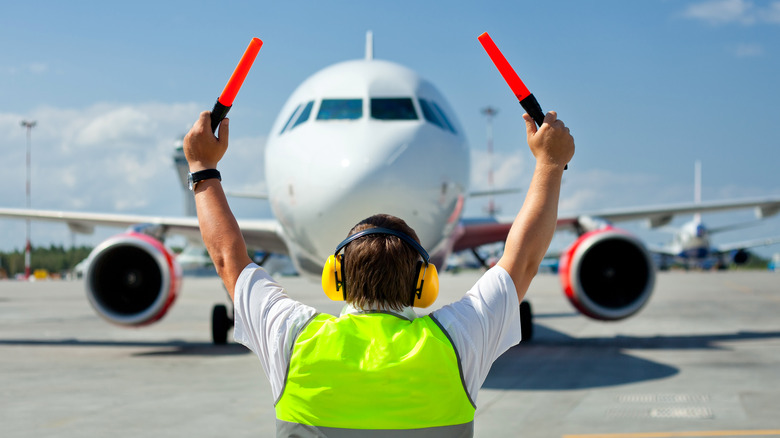Here's Why Getting Off A Plane Takes So Long
It's no secret that people hate spending even a minute more on a plane than they have to. As soon as the plane lands, you may hear the click of the seatbelts unbuckling as people start to shift in their seats and gather their personal items. In some places, you may even see passengers stand up to grab items from the overhead bin before the plane has even stopped moving. Talk about impatient!
For the conversely patient passengers, it can be a tad bothersome to watch people make all that fuss when everyone knows this unspoken universal truth — no matter what you do, you're not getting off the plane any faster, bucko. Exceptions to this might be people with short connections who get shuffled to the front but even then ... the plane door doesn't exactly open any faster. While this might be a common occurrence, have you ever wondered why this is?
Are we there yet? ... Are we there yet?
Whether it's just flown for two or 20 hours, when a plane finally lands, there is a series of tasks and procedures the pilots, flight crew, and ground crew must take. While this can make the final minutes of your flight feel as long as the flight itself, rest assured that this is all done for the safety of the plane, its passengers, and crew.
The plane first has to taxi from the runway to the gate, which — depending on the size of the airport — can take a while. Once the plane has reached its appropriate gate, the pilots then have to power down the engine and signal to the ground crew that they can begin their operations to get the plane secured and the jet bridge extended to the door. Pilots do this by turning off a little red blinking light called an anti-collision light. Once the jet bridge is in place, either the ground crew or the flight crew will open the door to the plane and passengers can begin to disembark.
Know your rights when things go wrong
Even in the best of circumstances — with the swiftest of crew both in the plane and on the ground — things can go wrong. These are called "tarmac delays" by the U.S. Department of Transportation, and there are laws in place that protect the well-being of passengers should these unexpected delays turn into long waits.
Sometimes, there can be mechanical issues — either with the plane or the jet bridge. Other times delays can occur when there's congestion (much like traffic on the freeway), and there may not be any gates available for an airplane to roll up to. Other issues can arise with bad weather, security threats, and even the ground crew being too busy or short-staffed to get to your plane quickly.
When this happens, you might be on the ground but going nowhere. If this occurs at a U.S. airport, passengers are entitled to an opportunity to safely disembark the airplane within three hours of waiting for domestic flights and four hours for international flights. Cabin crew are also required to provide food and water to passengers within two hours of waiting. There are exceptions to these rules only in the case of safety or security concerns.
However, if this happens, we're willing to bet you'd be a lot more patient when waiting to get off your plane in the future!


